Revisitor
Revisitor is a book. Sort of. Here’s the premise:
A groundbreaking new technology is on the verge of its public launch. Revisitor promises its clients a compelling offering: to turn back the clock of their life and return to any point in their past. But as its launch approaches, the world begins to question what the real costs of using the technology will be.
But the story of Revisitor lives beyond the book’s pages.

The Book
Revisitor’s narrative is presented in textual fragments, each of which serves as a window into a fictional world where news headlines, paperbacks and editorials interweave to provide multiple perspectives on a multi-threaded storyline.
You can read Revisitor on pretty much any device, but it looks best on a tablet. Purchase from the following vendors:
Revisitor is an experiment in narrative format. Instead of creating the story in a more traditional approach, I wanted to do more with less: presenting the world where an offering like Revisitor could exist in a tactile way, where every page offers a different perspective on a linear series of events, each imbued with its own bias and motives.
The goal was to create a story that feels lived in, taking design cues – typography, layout and styling – from the various media I sought to give a voice.
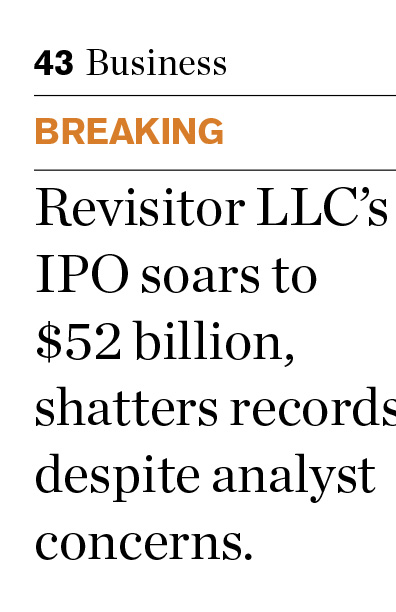
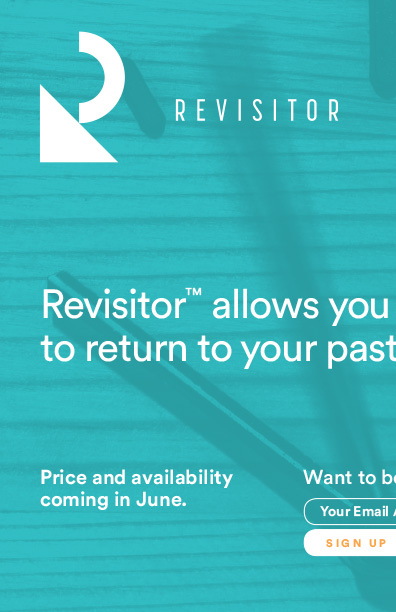
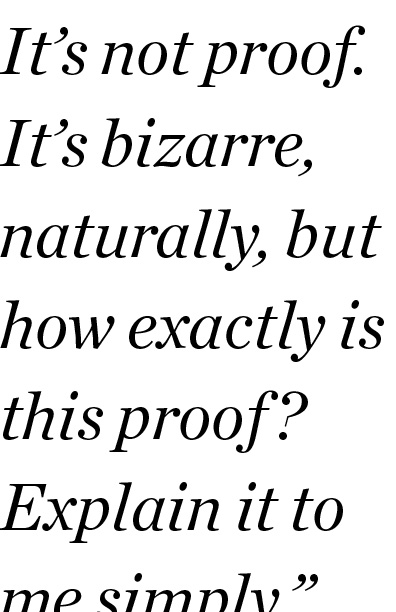
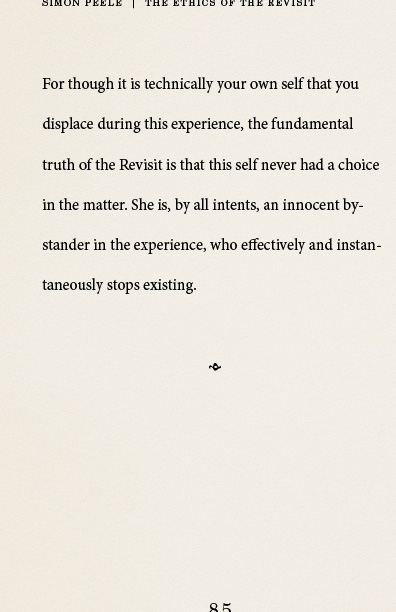
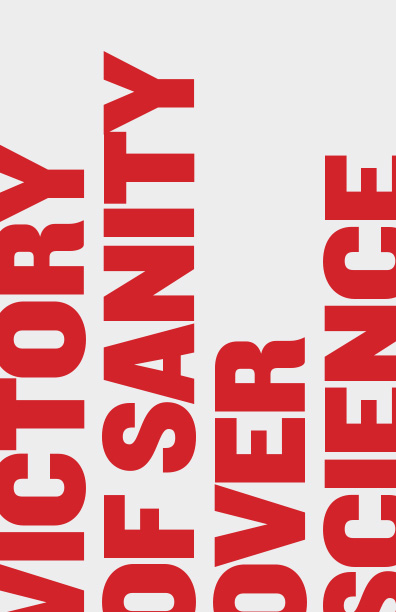
The Tease
I didn’t want to just launch the book and promote it like any other project. Instead, I wanted to build a campaign around the project to help further the world I had created and see if I could create an audience that didn’t even know what was coming. To that end, I began the thought experiment: if Revisitor existed as a real offering, how would it be marketed? And that was the seed for how I wanted to approach the tease campaign.
The campaign had two rules.
1) It will be vague. If Revisitor was to exist as a product yet to launch, its marketing effort wouldn’t spill the beans on how the technology worked – it would instead center its communication strategy on the benefits of the technology, and tease the possibilities.
2) It will provoke. I wanted to hint at the dark side of the technology without putting all of my cards on the table. So the communication was free to prod the viewer with statements that could cause unease. Nowhere is this more true than on the microsite.
The first thing I did was set up revisitor.org, which would act as Revisitor’s pre-launch homepage. The site offers a "pre-screening" that invites users to submit a short survey to be considered for the inaugural "beta" program. Of course, this survey is irrelevant: data is collected, but the screening process itself isn’t the point. The goal is to shine a light on the dark side of the Revisitor offering, firstly by making it clear that the screening hinges on a user’s social status (income level, age) and ethical underpinnings. To this end, the survey subverts the expectations users might have of philosophical questions like the "Trolley Problem" and offers some... seedier options.
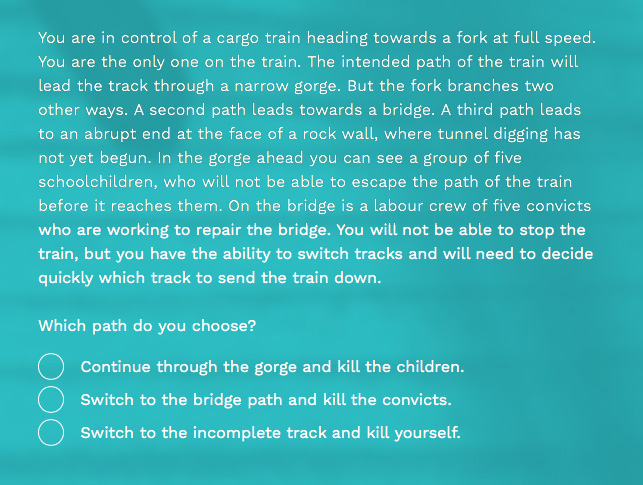
The screening process essentially becomes apart of the narrative, rather than a functional tool in and of itself.
The instagram campaign (@revisityourlife) built upon the effectiveness of the website, while also attracting new users with compelling motion graphic pieces and thoughts on time.
Each motion graphic piece used a variated music score I created to give each a slightly different feeling while binding all together under a homogenous voice. Each plays with a different idea on time or timekeeping.
And finally, the last component of the campaign was to ground the whole marketing effort in a series of 1-minute ads with the goal of presenting Revisitor as a true commercial offering, achieving a broadcast-worthy level of quality. The challenge would be to do it for as cheaply as possible, since at this point I had invested nothing but my own time.
I wrote two scripts, scored a background soundtrack (repurposing the motifs from the Instagram animations), and sourced footage from Creative Commons libraries and other freely-licensed stock footage. I enlisted the help of the talented Adam Schoales to help edit and fine-tune the pieces, and relied on low-cost voice talent from Fiverr to help bring the scripts to life.
Epilogue
Revisitor is easily my most ambitious and time-intensive self-driven project I’ve tackled. It involves so many different skillsets (writing, design, animation, music composition, editing) and has taken nearly an entire year to complete since it was first conceived.
I’m incredibly proud of the book itself and the world built around it, and I hope others will enjoy it and be inspired in countless ways as well.